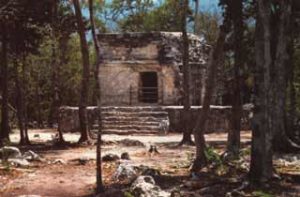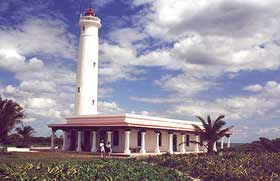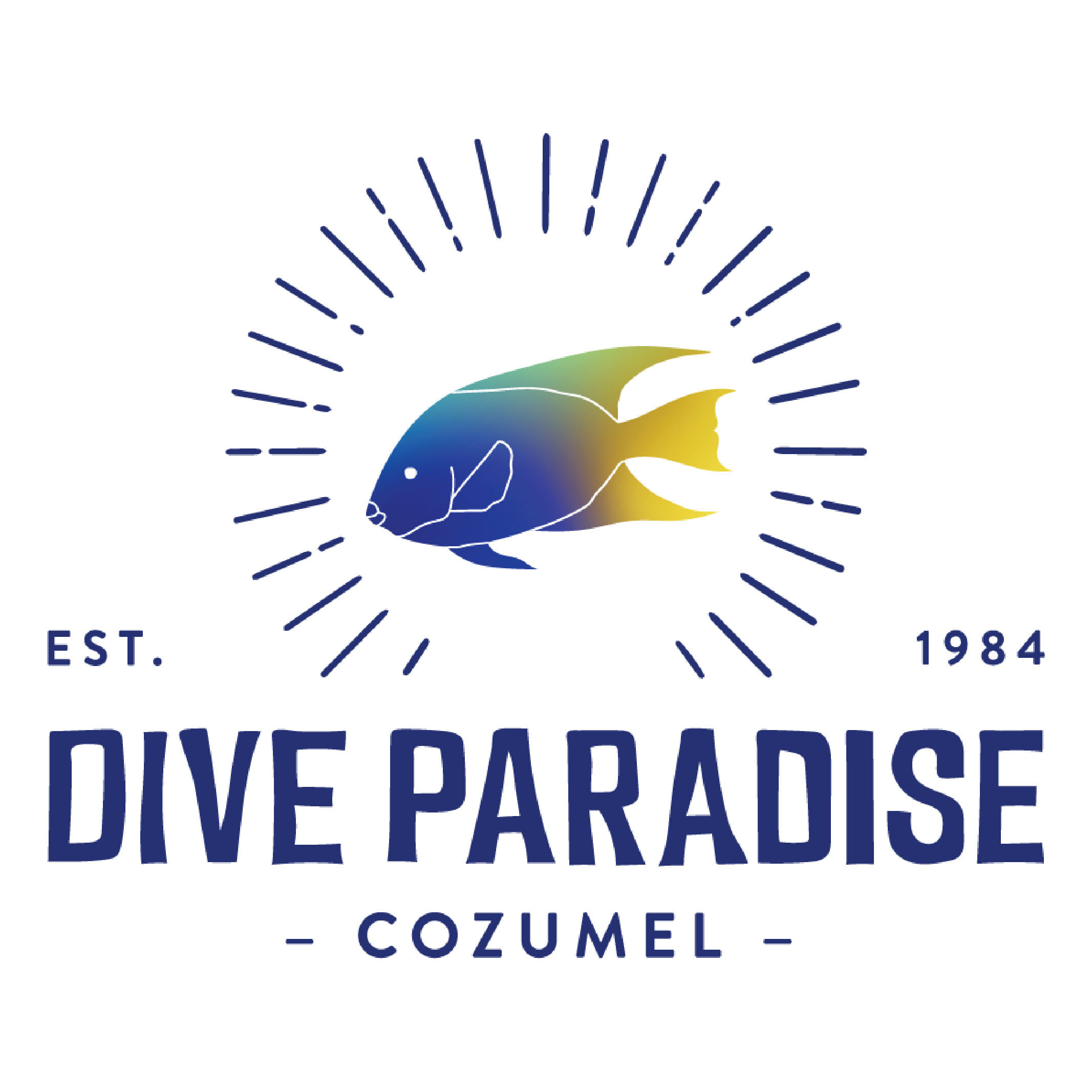The First Settlers
Cozumel is Mexico’s original Caribbean playground. The Mayans, its first inhabitants, considered it a sacred shrine and referred to it as “Ah-Cuzamil-Peten”, meaning “Island of the Swallows.” At the height of the Mayan civilization, woman, at least once during their lifetime, would make the 12-mile journey by boat from the mainland to worship “Ixchel”, the goddess of fertility. Today, at more than 40 sites around the island, archaeologists still uncover small dolls that were offered in sacrifice during the fertility ritual.
 The Spanish first arrived on the island in 1518, early in their conquest of the New World. That year, Juan de Grijalva landed with four vessels bound for Cuba. His peaceful and uneventful visit was followed a year later by that of the infamous Hernán Cortés. With Cortés’ arrival, many of the Mayan temples were destroyed, and near where the airport now stands, the conqueror had a small church built. But the Spanish explorers didn’t stay. Fresh water was in short supply and the mainland natives were hostile, so the conquerors pushed on in their search for El Dorado. When Cortés left the island, not only did the native civilization lie in ruins, but an outbreak of smallpox swept through the island, killing thousands. From the population of 40,000 that Cortés reported in 1519, the number was a mere 300 by 1570. The island was completely abandoned 30 years later.
The Spanish first arrived on the island in 1518, early in their conquest of the New World. That year, Juan de Grijalva landed with four vessels bound for Cuba. His peaceful and uneventful visit was followed a year later by that of the infamous Hernán Cortés. With Cortés’ arrival, many of the Mayan temples were destroyed, and near where the airport now stands, the conqueror had a small church built. But the Spanish explorers didn’t stay. Fresh water was in short supply and the mainland natives were hostile, so the conquerors pushed on in their search for El Dorado. When Cortés left the island, not only did the native civilization lie in ruins, but an outbreak of smallpox swept through the island, killing thousands. From the population of 40,000 that Cortés reported in 1519, the number was a mere 300 by 1570. The island was completely abandoned 30 years later.
Although several pirates used Cozumel as a base of operations in the 17th century, including the notorious Henry Morgan and Jean Lafitte, the island wasn’t resettled until 1848, when the people sought refuge from the “War of the Castes” on the Mexican mainland. By 1970 the population had reached 10,000, and today the population exceeds 50,000.
 The remains of Mayan temples and ceremonial centers still dot the island. Popular legend not withstanding, no buried treasures have been found to date.
The remains of Mayan temples and ceremonial centers still dot the island. Popular legend not withstanding, no buried treasures have been found to date.
World War II put Cozumel on the map. The U.S. built an air base for planes hunting U-boats in the mid-Atlantic. Drawn by the clear waters, frogmen came to train and returned home with stories of magnificent underwater vistas. Oceanographer Jacques Cousteau even proclaimed Cozumel to be one of the finest diving sites in the world.
The Island
Cozumel lies 18 kilometers east of the northern coast of the Yucatan Peninsula. Only the mainland side of the 32 mile-long and nine mile-wide island is settled. To the north and south are the resort hotels. Less expensive lodging may be found in the only town , San Miguel.
Life on the Island is relaxed, somewhat akin to a ski resort, only the climate is tropical and the sport is scuba diving. Cutoffs and tanktops seem to be as dressy as anyone ever gets, except for the nicer restaurants, where the higher level of casual is expected.
Life on the Reefs
With their crystal-clear water and incredible variety of marine life, Cozumel’s reefs offer an underwater experience you won’t soon forget. The waters surrounding the island are so clear that visibility can be up to 250 feet, opening up a world of beauty unlike any other.
As many as 250 different species of fish can be seen in Cozumel’s waters; one of the most spectacular is the Queen Angelfish, possessing bright blue-and-yellow markings and the distinctive blue “crown” on the top of the head. You can even catch a glimpse of the Toad fish, found nowhere else in the world. Making it’s home in the holes along the reef, this fish grows from 12 to 16 inches in length. It has the distinction of being one of the world’s fastest eaters: it can capture and eat a whole fish in milliseconds- faster than the blink of an eye!
In addition to the colorful fish, Cozumel boasts some of the biggest and most spectacular sponge formations in the world. Fed by a continuous current bringing a steady supply of food to the reefs, some sponges, such as the Elephant Ear sponge, can grow as large as 12 feet across. Other sponges, like the Barrel sponge, gain considerable size as well.
Diving
 Cozumel is renowned as one of the greatest diving destinations in the world. The combination of spectacular coral reefs, located just off the southwestern coast, and the exceptional clarity of the water has made the island a diver’s heaven. The diving technique most widely used in Cozumel is drift diving, whereby divers make use of the constant ocean currents to make their way through the reefs. With current speeds as fast as 1.5 feet knots, you’ll find that you will be able to cover more distance on one tank of air then you might at other diving destinations.
Cozumel is renowned as one of the greatest diving destinations in the world. The combination of spectacular coral reefs, located just off the southwestern coast, and the exceptional clarity of the water has made the island a diver’s heaven. The diving technique most widely used in Cozumel is drift diving, whereby divers make use of the constant ocean currents to make their way through the reefs. With current speeds as fast as 1.5 feet knots, you’ll find that you will be able to cover more distance on one tank of air then you might at other diving destinations.
The Beaches
There are two very different kinds of beaches on Cozumel. One type, found on the west coast of the island facing the Mexican mainland, offers stretches of golden sand, often with all the amenities of a beach club. On the east side facing out in the Caribbean Sea, quiet beaches alternate with rocky shores along the vast expanses of the solitary coast. The waters on the more populous west side are generally calm, while the roaring surf on the east creates treacherous breakers and undertows.
Things to Do and Places to Visit
 The little town of San Miguel offers a variety of giftshops, bars, restaurants and interesting niches to explore. There is a world class museum on the beach road and just south of town is an archaeological park with models of Mayan, Olmec and Toltec ancient sculptures.
The little town of San Miguel offers a variety of giftshops, bars, restaurants and interesting niches to explore. There is a world class museum on the beach road and just south of town is an archaeological park with models of Mayan, Olmec and Toltec ancient sculptures.
Nightlife is always available, including a number of funky island bars and folkloric dancing entertainment. A rental car, bike, scooter trip or taxi tour around rural Cozumel will produce visions of an entirely different island, one that is mostly wilderness beaches, scrub jungle and rolling surf. There are several small Mayan sites on Cozumel, including San Gervasio and El Cedral, all easy to find and explore in half a day.
The Big Local Fiesta takes place most every Sunday night at the main town square from 7-9PM. Local bands often highlight the affair.Beer, hot-dogs and tacos are sold in the square.
The Cozumel Museum is an attraction worth visiting. Divers will especially enjoy the topographic map of the island’s underwater reef system. There are also many exhibits showing how the island and the Yucatan were formed, along with a photo gallery portraying Cozumel’s past and some of the devastating hurricane storms that have passed over the island.
 Parque Chankanaab is a great place for both education and relaxation. A gigantic natural aquarium, the saltwater lagoon at Chankanaab is stocked with multicolored fish, turtle, lobster and crab. Surrounding the lagoon is a nature trail and botanical garden displaying over 500 species of tropical plants from all over the world. Tons of white sand, palm trees and fine restaurants along with diving or snorkeling from the beach, make for an afternoon of varied diversion.
Parque Chankanaab is a great place for both education and relaxation. A gigantic natural aquarium, the saltwater lagoon at Chankanaab is stocked with multicolored fish, turtle, lobster and crab. Surrounding the lagoon is a nature trail and botanical garden displaying over 500 species of tropical plants from all over the world. Tons of white sand, palm trees and fine restaurants along with diving or snorkeling from the beach, make for an afternoon of varied diversion.
Cozumel Ruins – Though not Chitzen-Itza, the island is dotted with many small, though interesting remnants of Mayan culture. A major excavation is at San Gervasio which covers about 10 acres situated in enchanting jungle surroundings. Accessible by rental car, moto or taxi, San Gervasio can best be enjoyed with a self guiding tour map available in town.
The Town Market located at the corner of A. Rosado Salas and the 25 Ave. is an interesting, non-toursty place to shop with everything from meat, fish and produce to sandals and native clothing.
The Celarain Light-house and Wildlife Reserve, located at the most southern tip of the island, is a great adventure. A shuttle takes you the final stretch from the reserve camp (US$10/person donation). It is a bumpy ride and quite a climb to the top of the light-house(127 steps), but well worth the trouble as the view is spectacular. It is a great place to spend an afternoon and see some extraordinary birds, turtles and other wildlife of the island. It is a good idea to purchase an island map before preceding on a venture like this.
